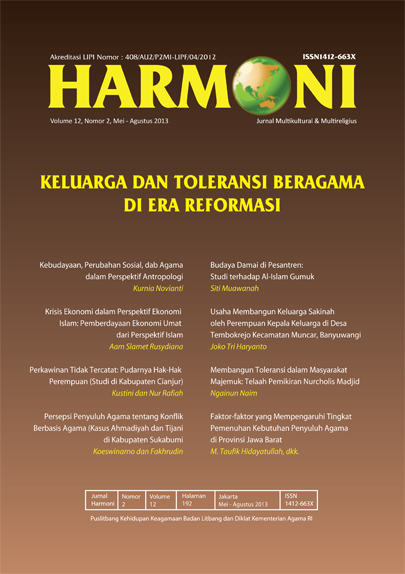USAHA MEMBANGUN KELUARGA SAKINAH OLEH PEREMPUAN KEPALA KELUARGA DI DESA TEMBOKREJO KECAMATAN MUNCAR BANYUWANGI
Keywords:
Widows, female heads of household (Pekka), ΓÇ¥SakinahΓÇ¥ Family, Keluarga Sakinah, Perempuan Kepala Keluarga (Pekka), JandaAbstract
In general, a family consists of husband or father, wife or mother, and children who each have different roles and functions within the institution of family. Internal affairs of the household, especially educating children, managing household matters, and providing meals are a wifeΓÇÖs common tasks, while working as a breadwinner is a husbandΓÇÖs responsibility. However, the social facts show there are families which have female heads of household because of certain reasons. This study applies a qualitative approach to examine women as heads of household in Tembokrejo Village, Muncar Subdistrict, Banyuwangi, East Java, as an effort to build ΓÇ£sakinahΓÇ¥ families. The findings suggest that female heads of household (Pekka) get a double burden in their families, such as carrying out the production function to generate income and support familiesΓÇÖ economy, as well as the functions of education, affection, care, and protection. Pekka play their roles to build ΓÇ£sakinahΓÇ¥ families by coping with the crisis as the impact of being left by their husbands for some certain reasons, solving economic problems, performing educational functions, and finally social interaction. The role of the government and the religious institutions are less able to protect and care about families headed by Pekka especially the poor ones. Protection and care for the families are realized by, among of them, providing guarantees to those families to obtain their basic rights, especially the economic ones.








